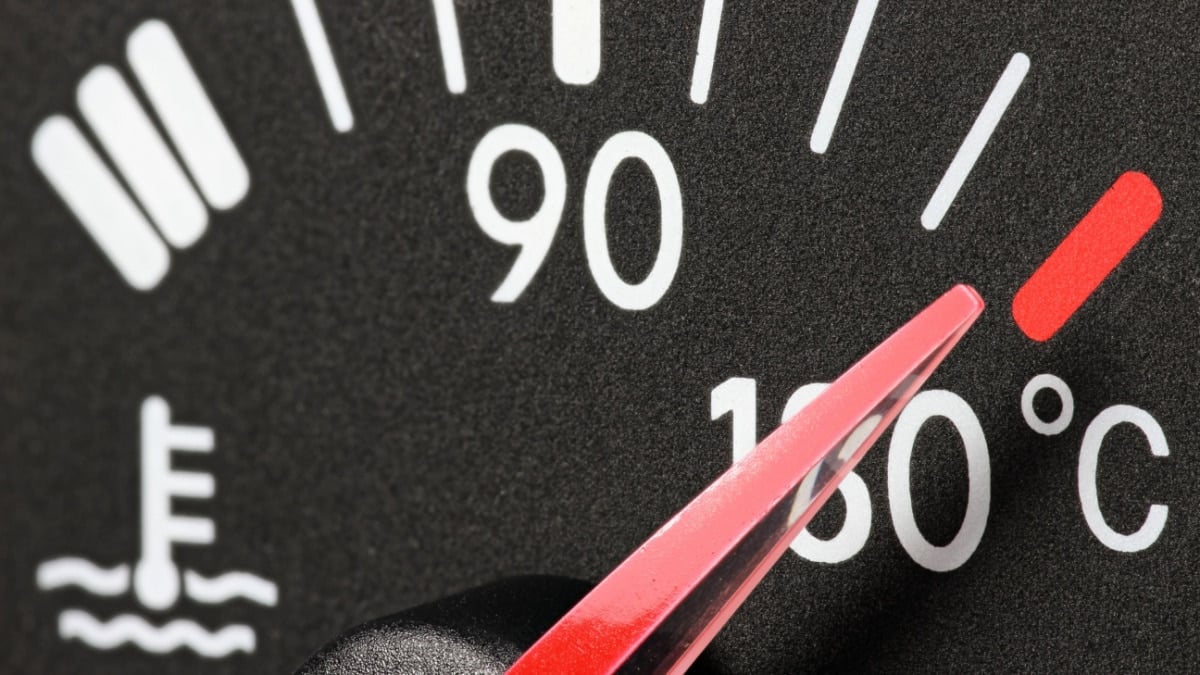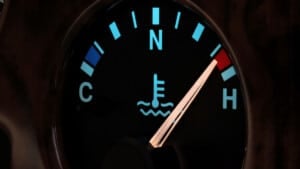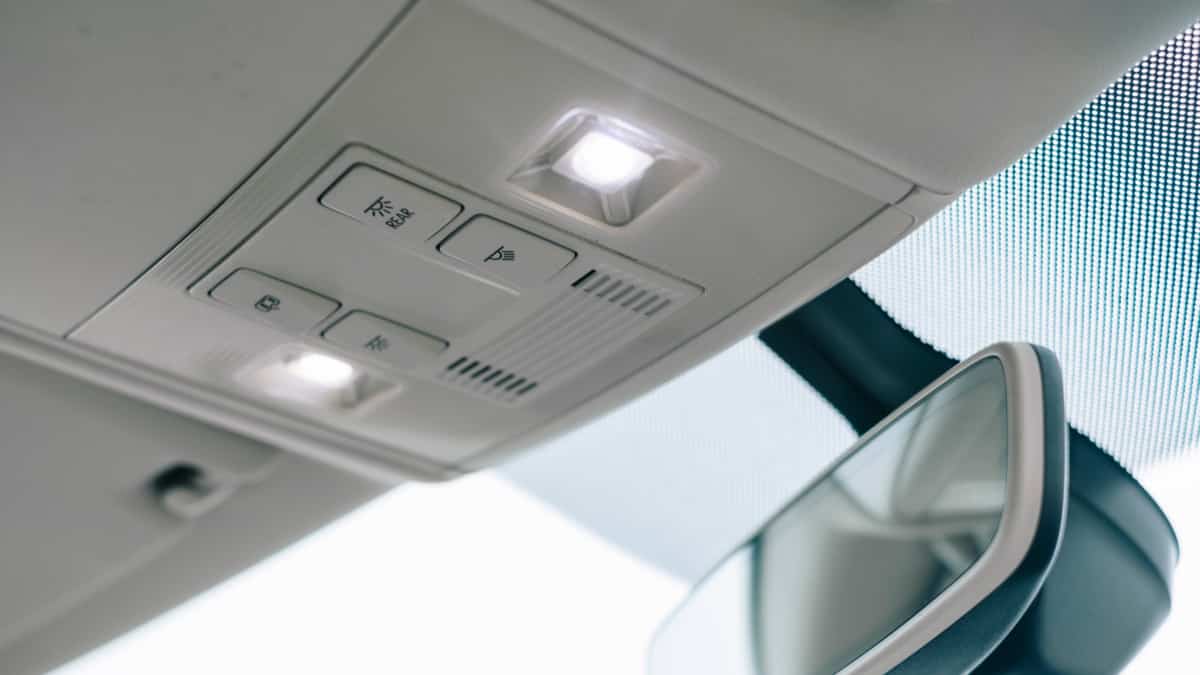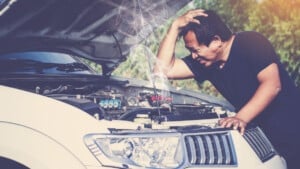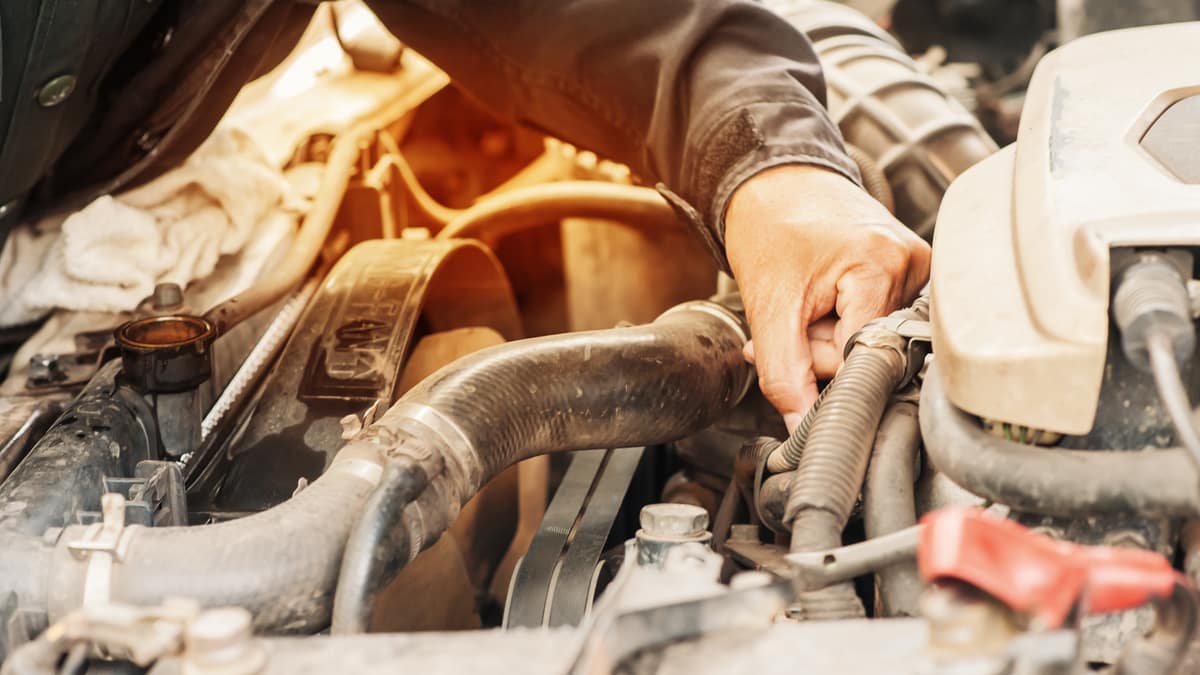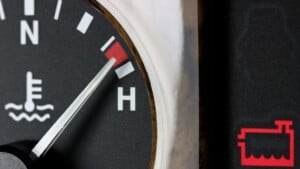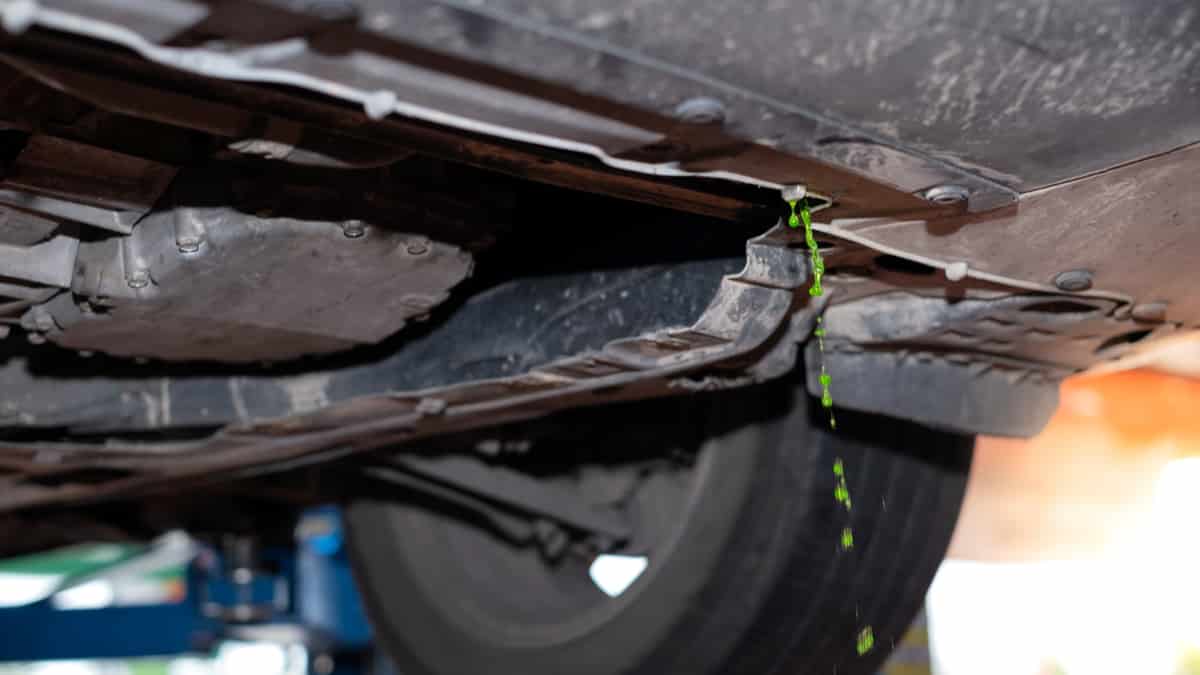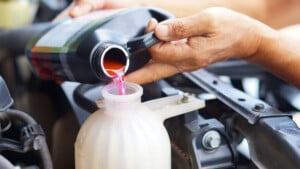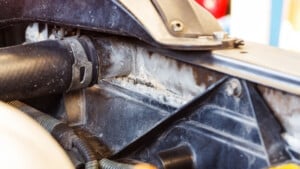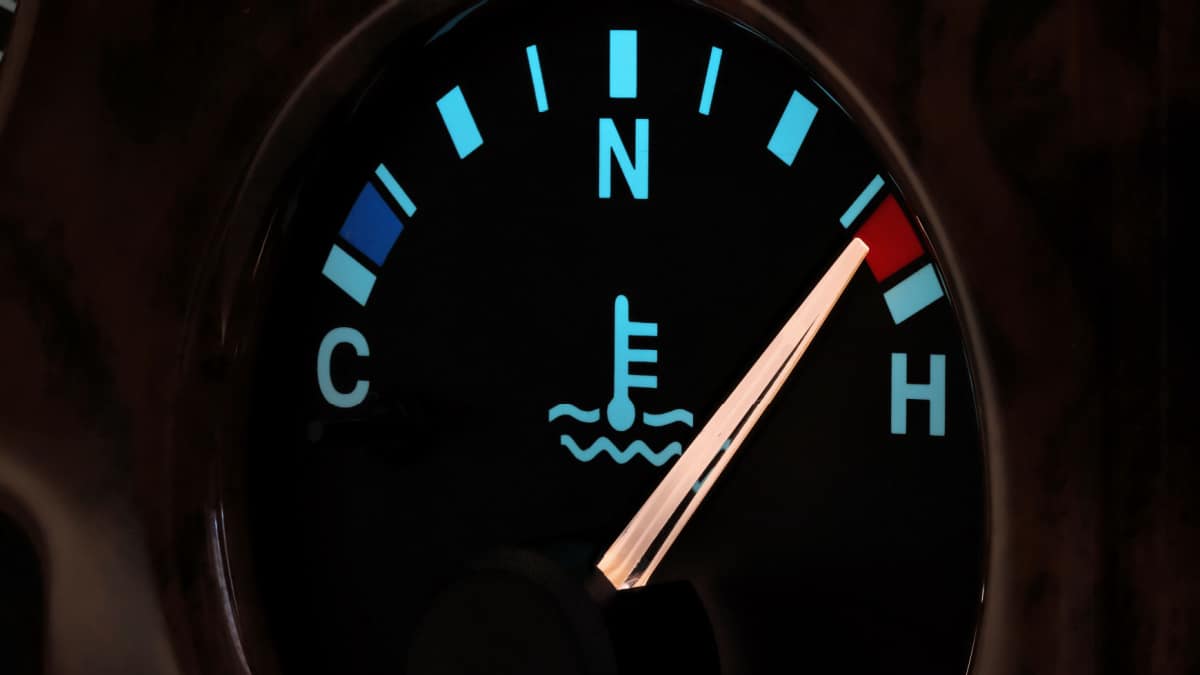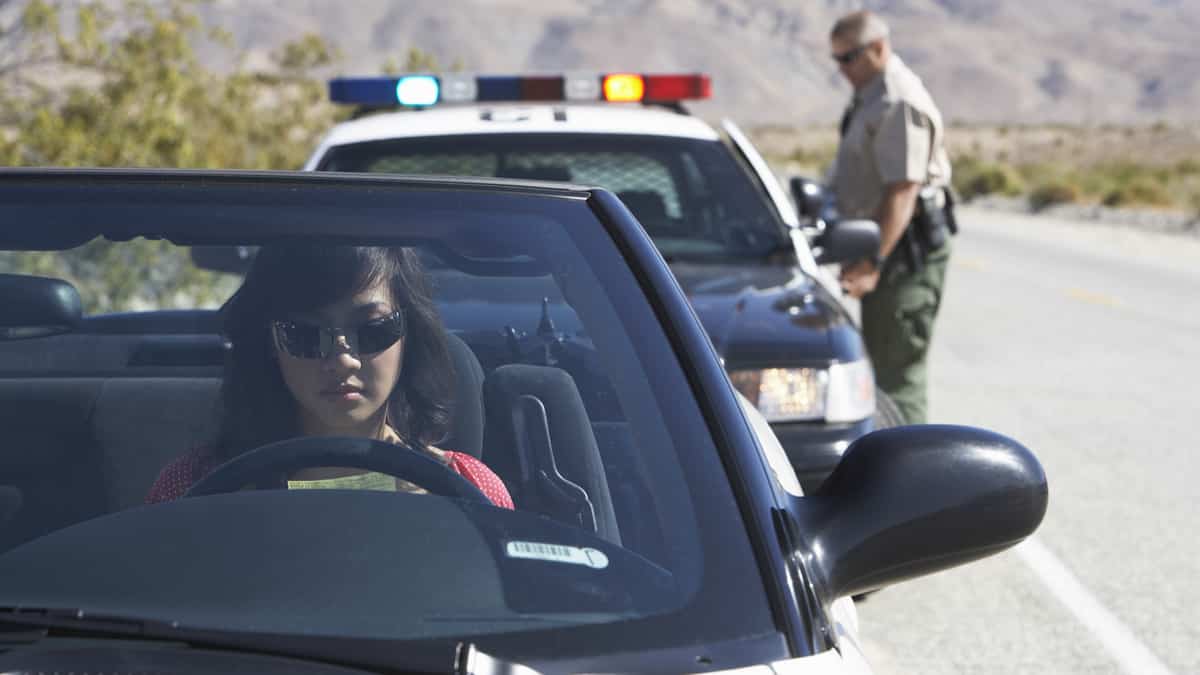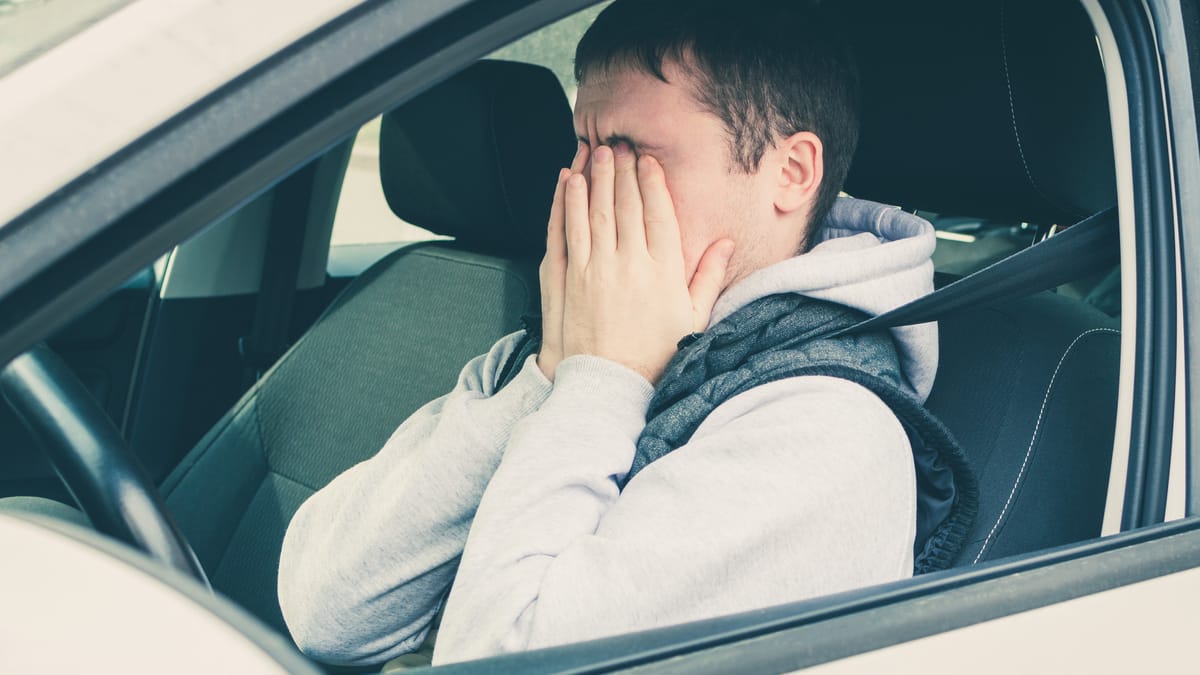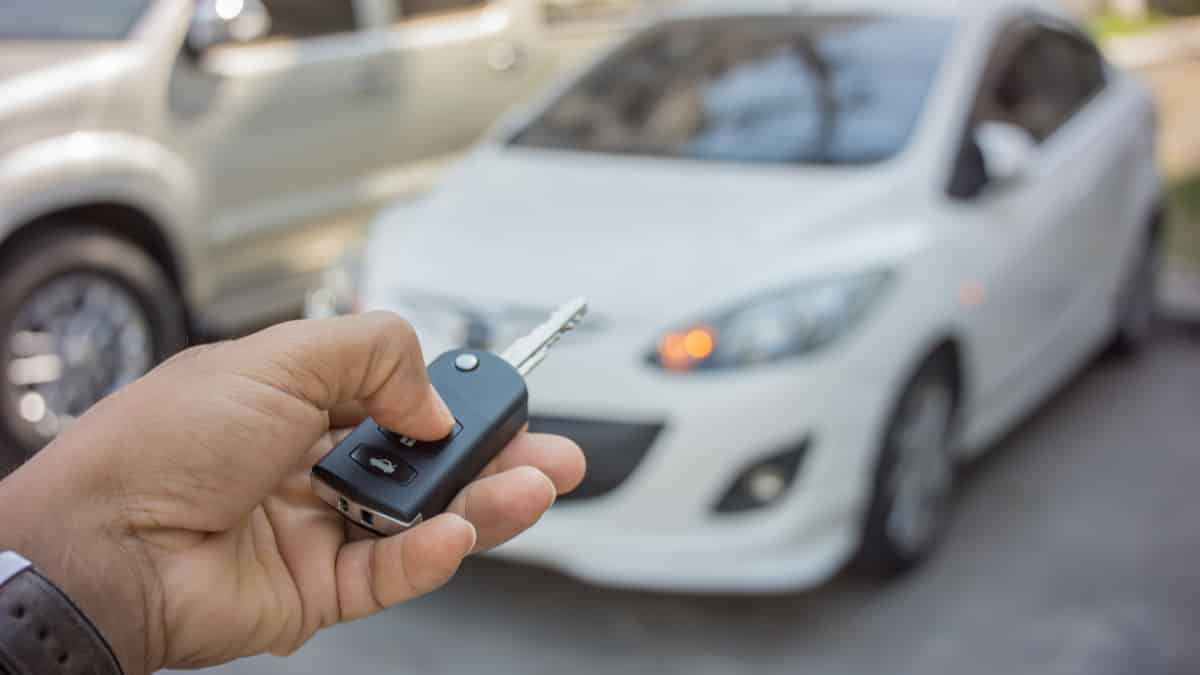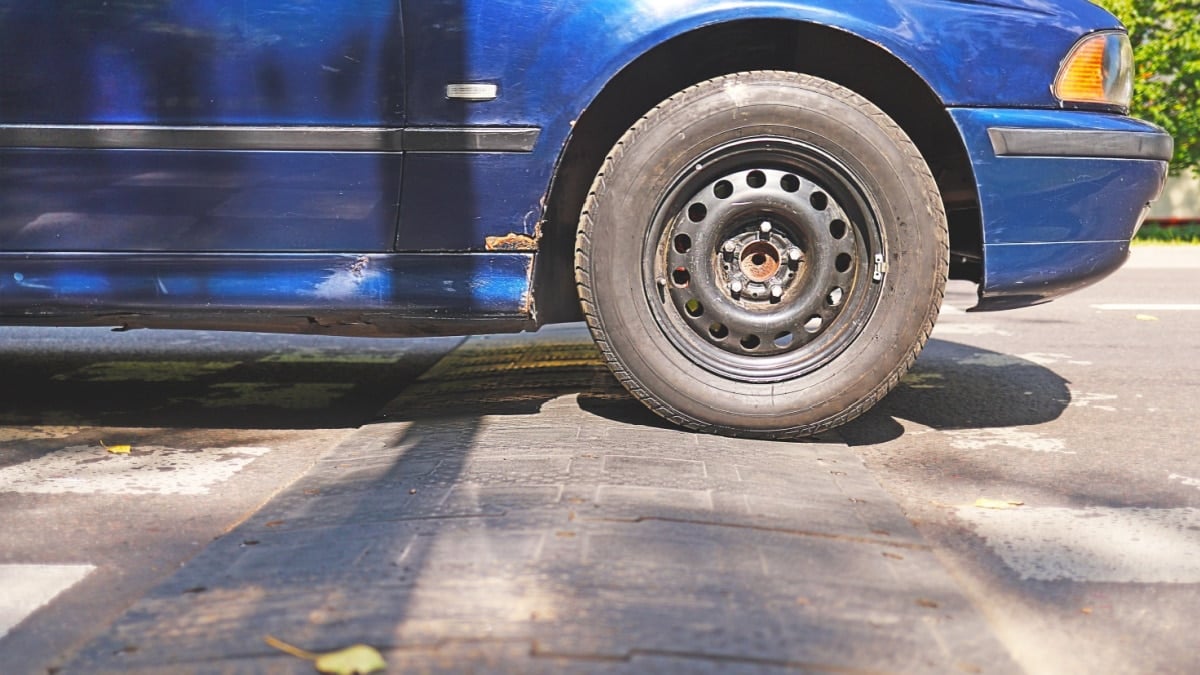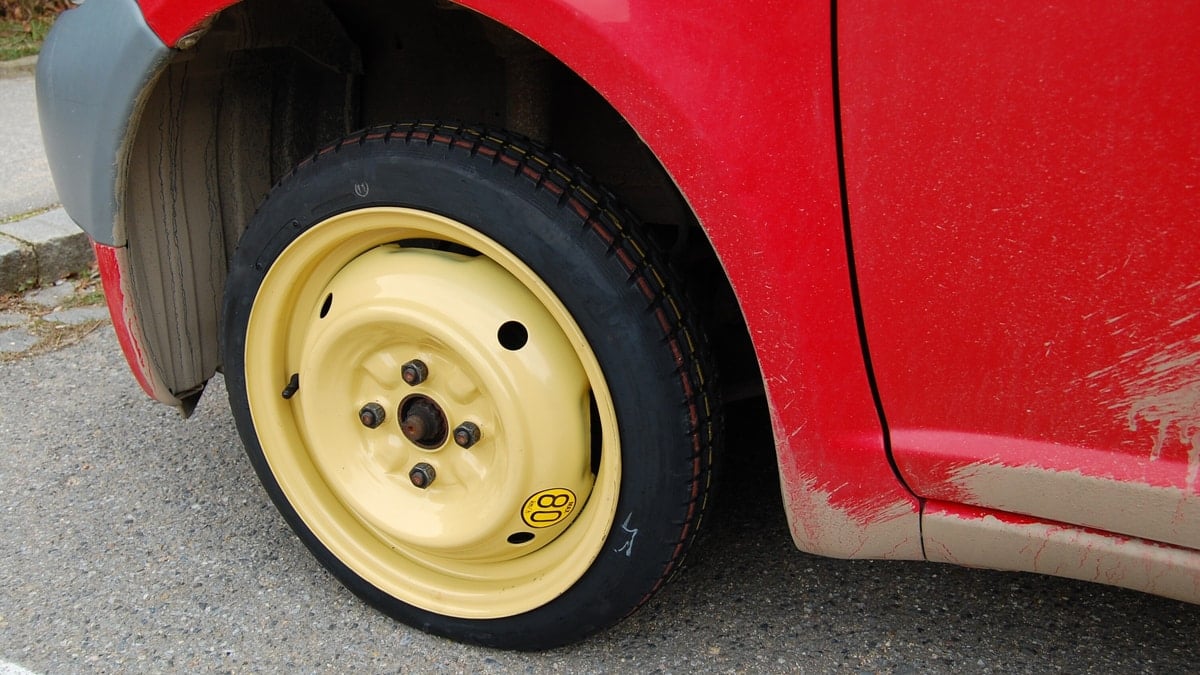You know how serious of a condition it is when the car overheats. It can lead to a blown head gasket and permanent engine failure. But what does it mean when the car is overheating and then goes back to normal? Is this just as serious, and what causes it?
In this guide, we cover the top reasons for the engine temperature fluctuation. We also show you how to fix the problem so you don’t have bigger issues to deal with. At the end of our article, you will get some answers to popular questions.
Reasons Your Car Is Overheating Then Going Back To Normal Temperature
If the engine temperature rises but goes back down, the motor might be working too hard. It could be due to a bad thermostat, coolant temperature sensor, water pump, radiator fan, or temperature gauge. There could also be a clogged radiator, low coolant level, or there’s air in the cooling system.
To help you determine the cause, we look closer at the possibilities.
1. Overworked Engine

It’s normal for the engine temperature to go up if you are pushing it too hard. If you are climbing steep inclines or towing heavy loads, the engine temperature may go up until you back off.
Thankfully, there’s sometimes nothing mechanically wrong when this happens. You just have to be aware of how hard you are pushing your engine, especially if you have an older vehicle.
2. Bad Thermostat
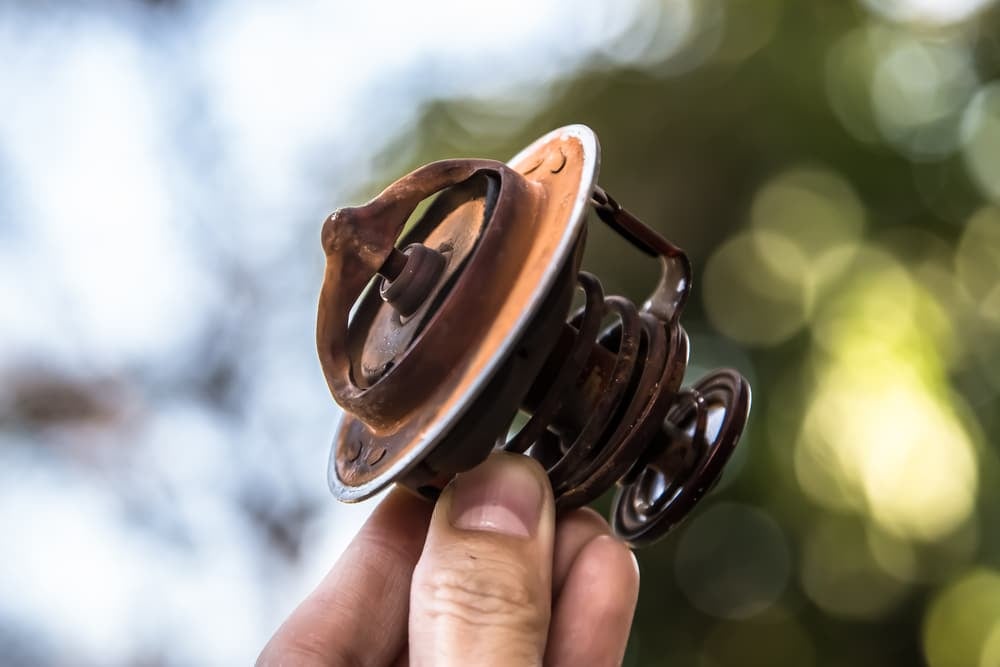
The thermostat is responsible for regulating the flow of coolant to and from the motor. If the thermostat registers too much heat, it lets coolant in and if it isn’t registering heat, it’s going to hold the coolant back.
If the thermostat is failing, it can act sporadically. It may not regulate the flow as it should, causing the engine to heat up for a time. If it’s not fixed, the thermostat will fail, leading to possible engine damage.
3. Clogged or Bad Radiator
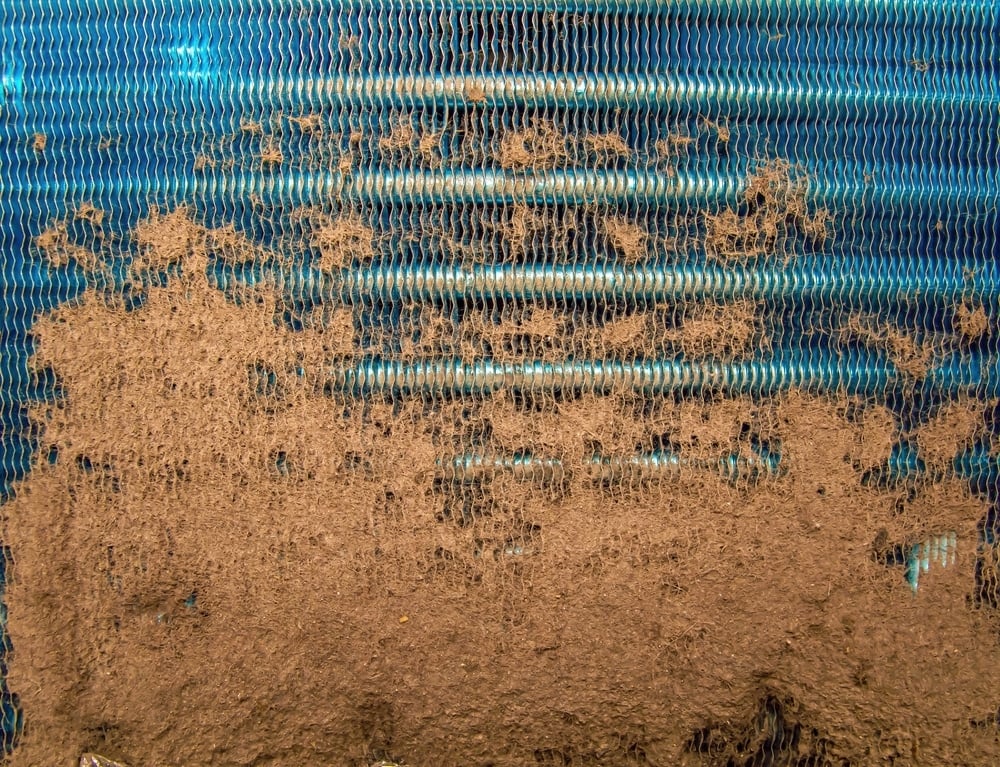
The car radiator helps to circulate the hot coolant away from the motor. If something clogs the radiator, the coolant can’t circulate as it should, leading to the same problem we just discussed.
The radiator can also go bad, causing trouble with circulation. Eventually, it’s going to make it impossible for the engine to cool down at all.
4. Faulty Coolant Temperature Sensor
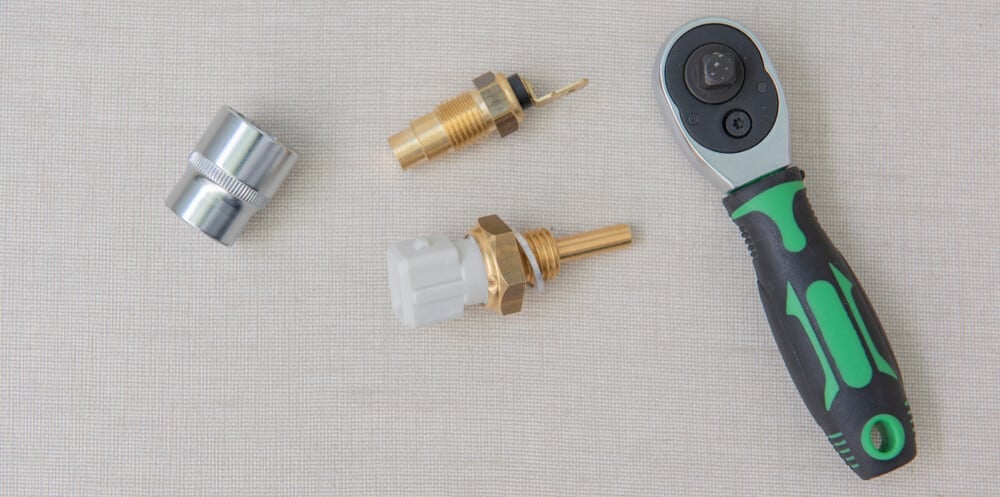
The job of this sensor is to measure the coolant temperature. As this sensor starts to fail intermittently, it can send off the wrong data.
Instead of showing an accurate reading, you may think the engine is overheating when it’s not. You may also notice the temperature gauge acting erratically during this time.
5. Low Coolant Level
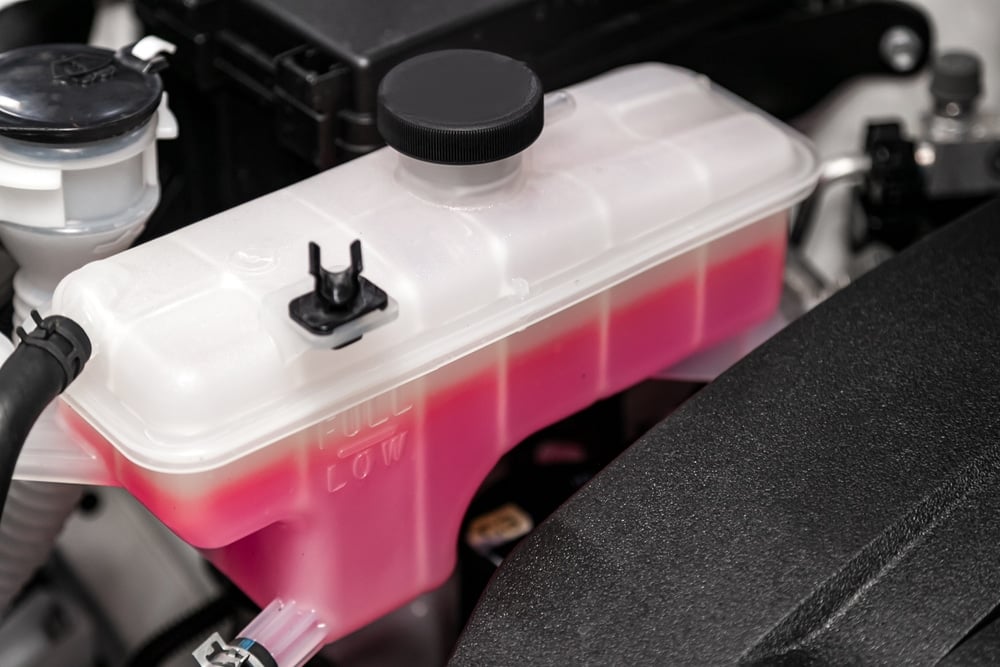
Your car must have the right amount of coolant in it to keep the engine temperature down. If the system is running low, the engine may get too warm at times.
A common cause of the coolant level dropping is a leak. If there is no external leak, it could be infiltrating the engine block through a blown head gasket, which is an expensive problem to deal with.
6. Bad Water Pump
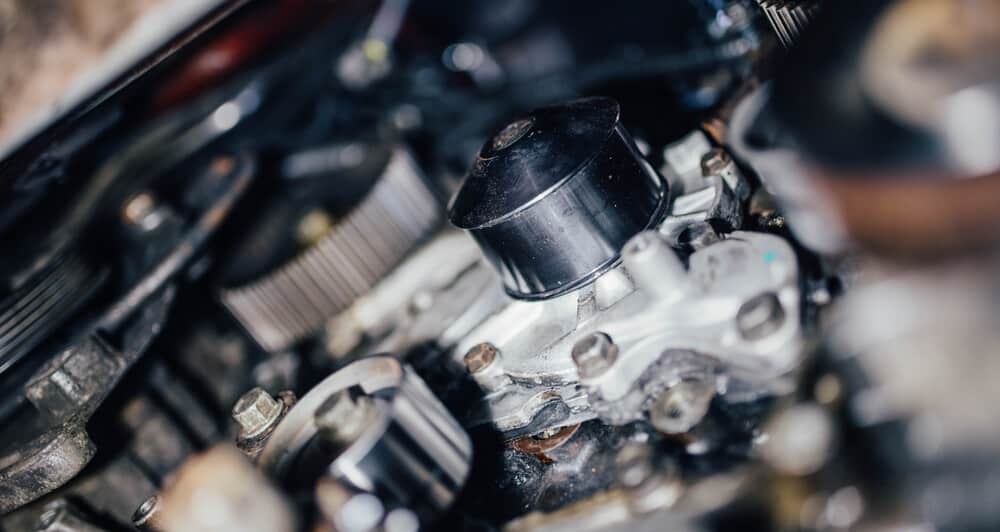
The water pump’s job is to circulate the coolant. If the water pump is failing, it may not have enough power to keep the coolant flowing from the engine into the radiator and vice versa.
At first, it may only start to overheat and then cool down again. But once the water pump fails completely, you won’t be able to get the engine cooled down.
7. Bad Radiator Fan
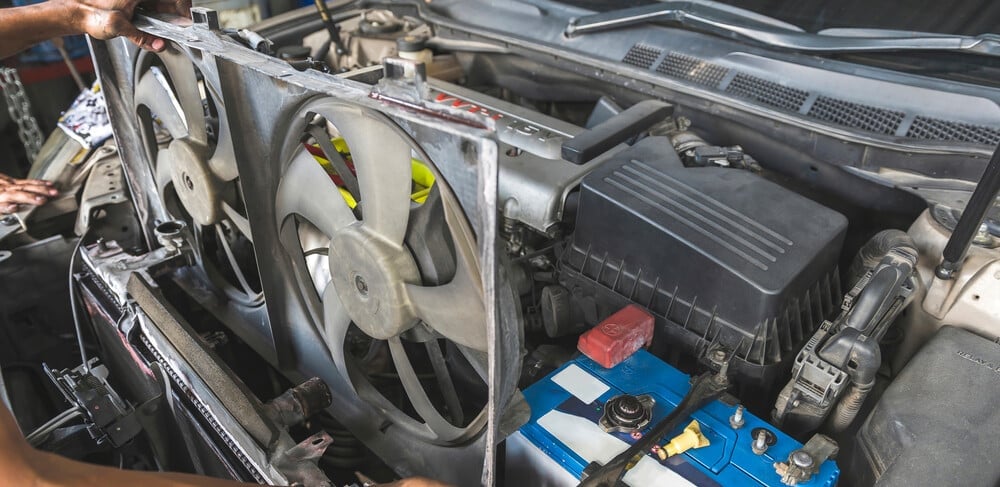
The radiator has a fan mounted to it to reduce the coolant temperature before it goes back to the engine. If the radiator fan fails, it won’t be able to cool the motor.
You may also notice trouble with the air conditioning. Plus, there can be a loud noise coming from the radiator because of the fan malfunction.
RELATED: 5 Symptoms Of A Bad Radiator Fan
8. Air in the Cooling System
If you’ve noticed trouble keeping the engine temperature down and the heater isn’t working right, there could be air in the system. Typically, the air gets in the system because of low coolant levels.
The cooling system is closed and should never have air bubbles in it. You want to fix this immediately before engine damage occurs.
9. Bad Temperature Gauge
There’s always the chance that what you think is happening actually isn’t. You are relying on the information coming from the gauge on the dashboard, but it could be wrong.
Gauges can go bad, just like other automotive parts. However, you should always assume that it’s right and act accordingly. You don’t want to continue driving with an overheated engine.
How To Fix A Car That Is Overheating Then Going Back To Normal
If you see that the engine is overheating, it’s important to take quick action, even if it’s returning to normal. Driving with an overheated engine can lead to serious damage. Here are a few steps we would take as professionals.
Check the Coolant Level & Look For Coolant Leaks

The first place you should look is the coolant level. Check the coolant when the engine is cold unless the owner’s manual tells you otherwise. If there’s not enough coolant in the system, you need to add more. Just make sure you use the right coolant type.
If the coolant level is low, you have to consider that there’s a leak. Put a piece of cardboard under the car to see where the coolant is leaking. It could be coming from a damaged hose or a loose clamp. Repair the area that’s causing the leak.
Check The Radiator Fan’s Function
You can test the radiator fan with a multimeter.
- Find the fan. It’s located on the radiator.
- Remove the motor connector from the fan.
- Identify the terminals that are supplying current to the motor.
- Prepare your multimeter to read volts.
- Connect the probes of the multimeter to the connector.
If the multimeter reads 12 volts, but the fan doesn’t run, the motor has burned out. If there’s not voltage, the wiring could be to blame. You may also want to check the relay and fuse.
Read Trouble Codes
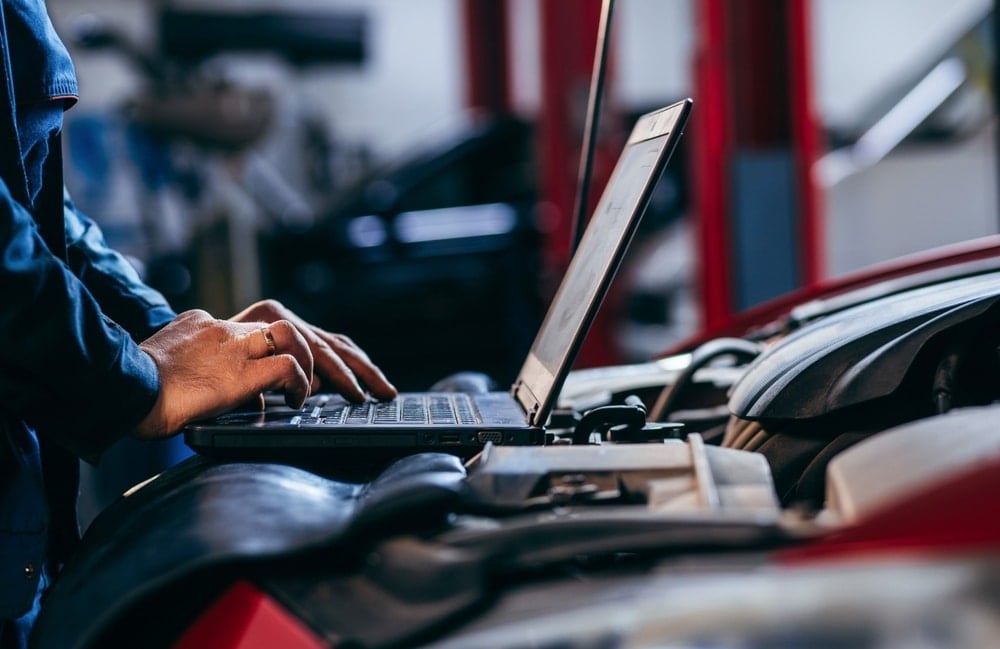
If there are any dashboard lights on, you can use your compatible code reader to see what DTCs are set. Plug the reader into the OBD-II port located under the steering wheel.
With our online trouble code library, you can figure out what the codes mean. Read through the information related to your codes to repair the problem.
Check the Thermostat, Coolant Temp Sensor & Water Pump
It’s possible that one of the other cooling system parts has malfunctioned. You can easily test the thermostat, coolant temperature sensor and water pump from home with the right equipment.
We recommend using a repair manual for detailed guidelines from the manufacturer. If something doesn’t add up, you should replace the corresponding part.
Flush And Bleed The Coolant System
You can bleed the cooling system from home. Here are some simple steps.
- Take off the radiator cap with the engine cool.
- Put a funnel into the radiator.
- Fill up the system with coolant as much as you can. Give it some time as the level will continue to drop and air bubbles will come out.
- Once the level stabilizes, start the engine.
- Turn the heater to the highest temperature with the fan on low.
- As the coolant continues to drop, add more fluid.
- Once the coolant stops dropping and the engine temperature remains normal, you can stop adding fluid.
Take the vehicle for a drive to see if the temperature remains stable.
RELATED: How to Properly Bleed Your Cars Cooling System by Yourself
Contact A Professional
If you are unsure how to fix the overheating issue, it’s best to contact a mechanic. You don’t want to keep driving with the engine getting too hot.
The cooling system can be difficult to work on if you aren’t experienced. Even as professionals, we can have trouble at times. Don’t be afraid to ask for help.
Why would my car overheat and go back down?
There’s a mechanical failure that needs to be dealt with or the coolant level is too low. Diagnose the system to see if you have a bad thermostat, water pump, coolant temperature sensor, temperature gauge, radiator fan, a clogged radiator or air has gotten into the system.
Can a car be okay after overheating?
There’s a chance that your vehicle is okay if it only overheated for a short time. However, you don’t want to let it continue overheating and you should have it looked at immediately. If there’s something that can be repaired, you want to fix it before permanent engine damage occurs.
How long before an engine is damaged from overheating?
It only takes thirty to sixty seconds of the engine running too hot for damage to occur. For that reason, it’s best to pull over at the first sign of the engine overheating. You also want to have the system checked out immediately so a repair can be made before bigger problems occur.
How long should I let my car sit after overheating?
You should not drive the car any further until the engine is completely cooled off. This process can take up to thirty minutes. Speed up the process by popping open the hood while you wait. If the engine overheats again when you start back up, you need to figure out what’s causing the problem.
It’s completely natural for you to be alarmed as you watch the engine temperature gauge go up. Because this is a serious situation, it’s good for you to take action right away. You may only need to replace a small part that costs a minimal amount of money, but it will prevent you from damaging the engine, which is an expensive repair.
The gauges are there for a reason, so remember to pay attention. If anything ever feels off, take the vehicle to a professional for another opinion.
Categories: Coolant, Troubleshooting
